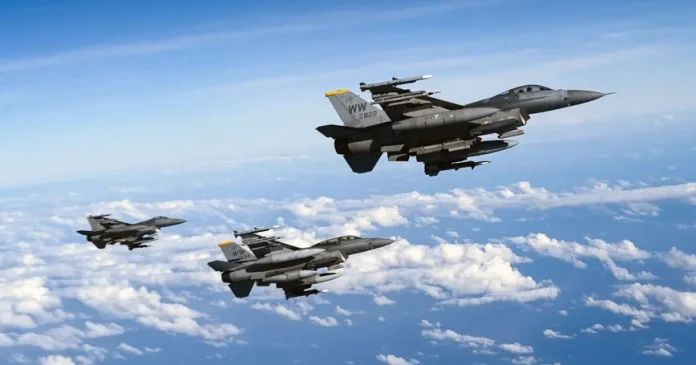The F-16, or General Dynamics F-16 Fighting Falcon, is expected to make it possible for Ukraine to compete in the air, which is why Kyiv has been asking for these fighters since the beginning of the war.
Although the fighter jets will improve the Ukrainian Air Force’s ability to support ground forces and allow it to fight back in the skies, experts warn that it will not solve all of the country’s problems, as major changes require serious preparations.
The exact number of F-16s to be delivered is not yet determined. The Netherlands and Denmark are expected to provide at least 37 fighters, while Norway and Belgium have also pledged to provide some of their stocks. Delivery dates range from 2024 to 2025, some coinciding with the expected completion of pilot training programmes.
Unlike the Soviet fighters in Ukrainian service, the F-16s are more powerful. However, they are also more fragile than their Soviet counterpart and also require specialised logistics and infrastructure.
For instance, upgrading the runways that Ukraine plans to use without attracting the attention of Russian intelligence could be a challenge. Viktor Kevliuk, an expert from Ukraine’s Centre for Defence Strategies, argued:
“Airfields must be protected from air strikes, which means it will be necessary to deploy the air defense systems if it has not already been done. The allies should also provide us with air-to-air missiles for air combat because Soviet bombs are not suitable for this plane.”
Although the F-16s are considered a modern model of fighter jets, they first went into production in the late 1970s, which may require Ukraine to install up-to-date avionics and weapons systems on them. In addition, the planes will require many spare parts pledged by the United States, which is fighting in Congress for continued aid to Kyiv.
Denmark had pledged to deliver six aircraft to Ukraine by the end of 2023, but the delivery date has reportedly been pushed back six months. In its excuse, Danish officials claimed that the delivery schedule also depends on the readiness of Ukrainian infrastructure and pilot projects.
Experts say that while the F-16s will provide important capabilities to Ukraine, they will not win the war by themselves. Peter Layton, Associate Fellow at Royal United Services Institute and former Royal Australian Air Force officer, stated:
With some careful planning… I think there’s a chance that at least in the early stages before the Russians understand what’s happening, they can score some air-to-air kills by having F-16 fighters in just the right place at the right time.
However, new fighters and missiles such as AMRAAM air-to-air will only provide a tactical advantage until the Russians adapt by moving their aircraft further away from the front line, Layton argued.
Kevliuk noted that Ukrainian and Russian warplanes have not been involved in major air-to-air battles in the past year as both armies try to maintain them. Still, Kelly Grieco, a senior fellow at the Stimson Centre, said F-16s can protect Ukrainian airspace by reducing pressure on ground-based air defences.
“With Russia targeting Ukraine’s cities, there is a very real danger that Ukraine’s air defense launchers could run empty trying to engage every salvo of Russian drones and missiles… If that happens, Russia could gain air superiority over Ukraine by default, and it would be able to bring the full firepower of its air force to bear on the battlefield.”
Moreover, no matter how versatile the F-16s are, they still have limitations. Grieco argued that they are unlikely to be the key to breaking through Russia’s defence lines or establishing air superiority. To do so, she argued, Ukraine needs to suppress or destroy Russian surface-to-air missile systems such as the S-400.
Ukrainian pilots flying F-16s, equipped with anti-radiation weapons, would have to fly well into the S-400’s engagement range to bait Russian operators into emitting. The S-400’s engagement range is nearly four times the range of an AGM-88 anti-radiation missile, which makes it an inherently dangerous mission, and Ukraine’s losses would likely and quickly become unsustainable.
Even though F-16s can bring Ukraine’s weaponry closer to NATO standards and provide some primary initiatives in the air, possessing these fighters is not the universal mean for winning the war.
